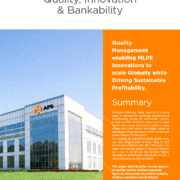APsystems upgrades EMA monitoring website with more data and improved interface
SEATTLE, JIAXING, LYON– APsystems today announced the launch of a new, redesigned version of its Energy Monitoring & Analysis (EMA) website APsystemsEMA.com.
The web-based platform, available for free on any connected devices, monitors and reports module-level energy production of solar arrays that utilize APsystems inverters and provides that information to homeowners and end users in a convenient and user-friendly format.
The site also enables APsystems-registered solar installers and contractors to lower their maintenance costs by creating and managing their customers’ PV installations accounts remotely. Key features of the new EMA site include a more attractive design, a more engaging user experience with an enhanced system dashboard, system management tools and improved reporting functions.
The new EMA website is active and available now, the result of a seamless transition from the previous site to the new interface. The added functionality addresses the high demand for detailed data and enhanced capability in a more user-friendly experience for the growing and competitive solar industry.
“We are excited to re-launch our very popular EMA website.” said Wesley Tong, APsystems chief marketing officer.” The site already hosts tens of thousands of homeowners and end users all over the world who view their APsystems solar array performance online and through the APsystems EMA App. These new design improvements now give them an even more in-depth view of their system energy production, improved reporting and additional historical data in a clean, comprehensive and dynamic user interface.”
Users can view their solar array performance using the same URL and log-in information as before at APsystemsEMA.com, through the APsystems EMA App or by visiting the APsystems website at APsystems.com and clicking “EMA Login” at the top right portion of the homepage.

















 l’Echo du solaire, mars 2016
l’Echo du solaire, mars 2016

